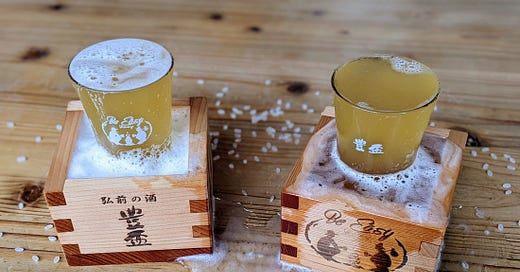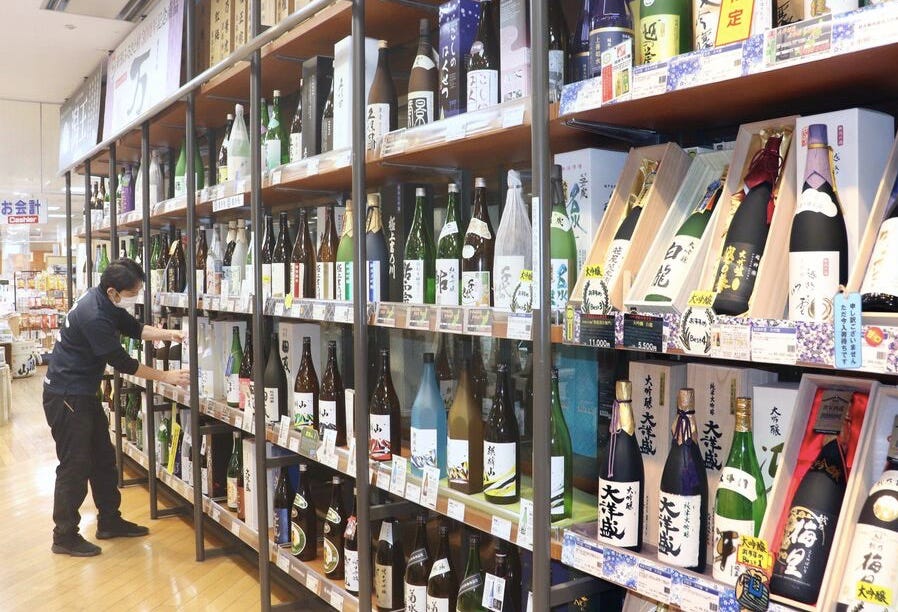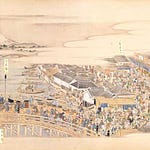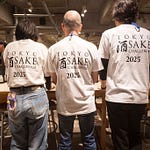Welcome to Issue #59 of SIN.
With the world in the throes of further upheaval and uncertainty we hope all our readers around the world are keeping safe and sane.
Here in Japan we're edging just that little bit closer to spring (although it's still pretty cold). It'll be just a matter of time before the spring releases begin hitting the fridges and then the next big question will be whether the government allows the public to hold hana-mi parties in parks and public spaces to celebrate the cherry blossoms (almost without exception best enjoyed with sake). Current restrictions on bars and restaurants have been extended once again and we're now looking at March 7 as the day when operations can return to "normal". As always, things can change at a moment's notice, so we wait with bated breath.
But for now, here's the news...
Awards For Best In Show Are Back
Hiroshima- The Japan Sake Awards is on track to be held in (almost) its full glory for the first time in two years.
Breweries are required to submit sake for the preliminary round between March 3 and March 24. The tastings for this first round will be held on April 20, 21 and 22. The final tasting will be held on May 12 and 13. Finally, the semi-public tasting known as the kenkyūkai, will be held in early June.
In 2020 the competition was canceled after the first preliminary round stage due to the onset of the COVID pandemic. In 2021 the competition was carried out to the final stages, but without the kenkyūkai component. This year will see the event go ahead in its entirety albeit with some COVID counter-measures in place.
The Japan Sake Awards (often referred to as the National New Sake Competition - the direct translation of the Japanese title) was first held in 1911 as a blind tasting of the best contest sake a brewery can produce. Approximately 900 of the 1150 or so active breweries in Japan enter the competition. On average, around 220 usually receive a gold medal, with a similar number receiving a submission award (there are no silver or bronze medals).
The object of the competition is for brewers to demonstrate their skills in brewing to (loosely) specified parameters. While the competition is a prestigious event within the industry, it is not so well known among consumers and competition sake is not usually released to the general market.
JG: I am sure that the industry on the whole is letting out a sigh of relief that this is all back on track. The event in Hiroshima is one of the few times that so many brewing staff gather in one place. Lectures and equipment exhibition events are scheduled around “the nationals.” I go most years, and look forward to attending this year, but not sure how strict the attendance controls will be. Fingers crossed.
Niigata GI
Niigata- In a low-key announcement on February 7, Niigata Prefecture became the sixth prefecture behind Yamagata, Mie, Nagano, Yamanasahi and Saga to receive GI recognition as a sake-producing region. The Niigata Brewers Association submitted its application in October last year.
Niigata Prefecture boasts 88 breweries - the most of any prefecture - and in 2020 shipments of 34,264 kiloliters saw Niigata rank third in volume behind Hyogo and Kyoto. However, overall sake consumption has declined in recent years to half of what it was in 1996.
The most recent data shows Niigata's domestic shipment was down 3.6% to 33,000 kiloliters in 2022. Honjōzō sales decreased by 7.8% to 6,784 kiloliters and junmai sake dropped 5% to 3,220 kiloliters. However, ginjō shipments increased by a slight 1.5% to 13,130 kiloliters.
Exports are up as overseas markets have continued to grow, and now it is hoped the GI status will help with branding overseas. Interestingly though, this GI status comes on top of the already established Niigata Origin Control (OC) certification, which also recognizes sake made with local water, rice, approved brewing technology and approved quality standards.
SIN reached out to vice chairman of the Niigata Sake Brewers Association, Ken Hirashima for clarification on how GI will differ from OC and its established logo.
Listen to this episode with a 7-day free trial
Subscribe to Sake Industry News to listen to this post and get 7 days of free access to the full post archives.














